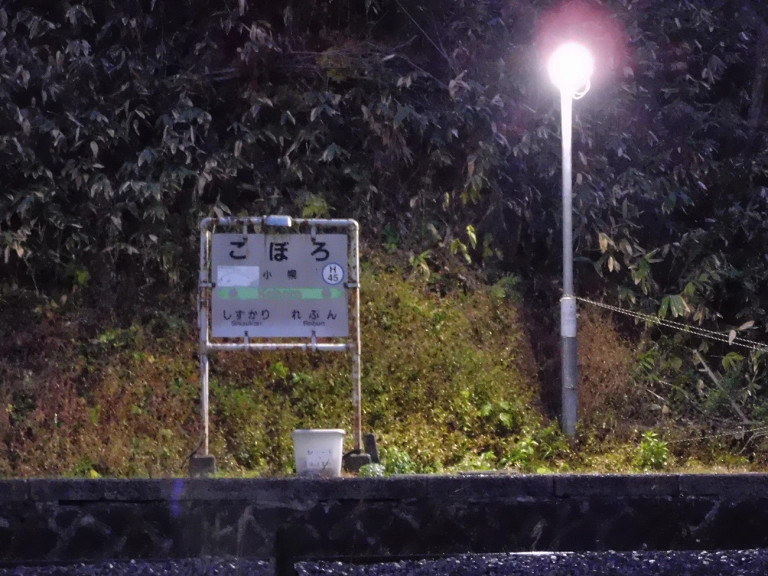
A mystical, hidden place only serviced by two trains per day: secret gem, or portal to another world?
If you’ve been on a countryside train in Japan, you’ve probably seen tiny wayside stations made more of trees than cement, with barren platforms that a lot of trains except the most local zip right through. Or maybe not; if you blink, you’d probably miss them.
Our Japanese-language reporter Seiji Nakazawa spotted one while traveling to the city of Oshamambe on the Hokuto, a limited-express train that runs between Sapporo and Otaru in the northern prefecture of Hokkaido. As he was gazing out the window, watching the scenery go by, he caught a glimpse of a strange station that flashed past him.
It wasn’t just that it was a small, empty station that gave Seiji a sense of discomfort. It was that the station lay between two tunnels in a mountainous district. While looking out the window, Seiji was surprised when they blasted out of a tunnel, through a station, and then back into another tunnel. The only thing Seiji had time to see was a beat-up signboard, which almost had him doubting what he’d seen.
When he arrived at Oshamambe and investigated, he learned that there is a fairly famous secluded station on the JR Muroran Line called Koboro Station.
But as Seiji observed, the station is surrounded by mountains, with a cliff face to its back and an ocean to its front, so the place was inaccessible by car or on foot. Which means the only way to go…
…was by a local train that only departs from Oshamambe twice a day. While there are actually four trains that leave from Oshamambe Station and head towards Gohoro, the 5:44 a.m. and 6:38 a.m. trains don’t stop there and only pass through it. The only trains that stop at Koboro leave at 3:34 p.m. and 7:28 p.m.
Taking the 7:28 p.m. train meant arriving at night, which wouldn’t be great for taking photos, so Seiji had no choice but to take the 3:34 p.m. train.
▼ The fare, by the way, was 880 yen (US$6.44) one-way.
Seiji arrived at 3:50 p.m.. The fact that it was only three stations away from Oshamambe Station was the place’s only saving grace, considering how late Seiji had arrived. In the middle of the mountains, 3:50 p.m. was just about approaching dusk.
Seiji was surprised to see five people get on the train he’d just gotten off at Koboro. After briefly wondering how they got there before him, he guessed that trains that come from the opposite direction probably leave earlier, so it might be easier to travel to Koboro from Muroran.
After he got his bearings, Seiji glanced around to see that the station really was sandwiched between two tunnel entrances, like a puzzle piece slotted into the perfect place. The platform was very narrow and felt more like a passing lane than an actual platform.
With the simple construction, the two tunnel entrances on either side, and the fact that one side of the station was backed up against a steep mountain face, Seiji felt rather trapped, like the two tunnels and the mountain were the sides of a box.
The open side of the box was on the same side as the platform for Oshamambe, a little opening between trees where there was a toilet and…some kind of station building?
That was about it when it came to the actual station. Seiji didn’t think it was especially scenic or pretty but he did find a plastic case on the platform for Muroran which contained 12 station guestbooks. There was also a doujinshi, or fan manga, in there. After traveling to Koboro and seeing how difficult it was to get there for himself, Seiji really felt the love borne by the train otaku who came all that way to leave their messages in the guest books.
The next train returning to Oshamambe was at 5:34, so Seiji had about an hour and a half to explore. He took a look around the area…
And found two arrow signs pointing in opposite directions, one for “Iwaya Kannon”, a temple, and one for “Buntaro Beach.” Perhaps these were places with nice views? Seiji supposed he probably only had time to see one, so he headed for Iwaya Kannon.
He ended up going on a serious mountain hike along a tiny path only wide enough for one person, with a sheer cliff drop on one side. Seiji would occasionally get a glimpse of the ocean that lay distant down at the bottom of the cliff, which made his legs shake. If he made a single misstep, he would fall to his death. It was truly terrifying.
Having had his fill of treacherous, remote mountain paths leading to hidden sightseeing spots, he was relieved when he finally made it to Iwaya Kannon. It was near a little sandy beach sandwiched between a barren mountain face and a cliff wall.
In the mountain face was a little cave where the Iwaya Kannon statues were. Apparently, they were carved and hidden here by the Buddhist monk Enku in 1666.
1666 would put Japan right at the beginning of the Edo period, the age of the shogun. That was long before the development of Hokkaido, so the fact that someone came here, to the remotest of backcountries, in 17th century Japan and placed Kannon statues in a cave is impressive in a “glad it wasn’t me” kind of way.
Honestly, the sheer fact that someone managed to come here during the Edo period is impressive. Just getting here in the age of modern transportation is difficult enough–imagine walking to a place like this!
Along those lines, Seiji began to wonder, why build a station in a place like this anyway? He couldn’t stop thinking about it, so he asked at the Toyoura Town Hall, which manages Koboro Station.
Toyoura Town Hall: “Koboro Station was apparently once a signal station.”
Seiji: “What’s a “signal station”?”
Toyoura Town Hall: “A place built to facilitate train traffic. At the time, steam trains, which belched smoke, couldn’t stop in tunnels, so this was a safe place for them to stop while another was coming through. Repair laborers used to use it too. According to documents found, the signal station was built in 1943, but because some fishermen lived nearby, they elevated it to a station.”
Seiji thought that was very interesting information. He did see the remains of a bridge near the Iwaya Kannon, which may have been used by the fishermen at the time.
Still, he couldn’t get over how extremely remote the place was. By the time Seiji returned to the station from Iwaya Kannon, the sun had completely sunk behind the mountain, and Gohoro Station had become a dim pinprick of light in the darkness. The “Koboro” sign under the light of the single lamppost made the place seem even more mystical.
By the way, it goes without saying that there was pretty much no phone service anywhere around there. Seiji could sometimes get one bar, but it was in and out. He could hardly get Softbank’s automatic home page to load, never mind any apps like Twitter. The wait for the train was long and boring.
Soon it began to drizzle, and Seiji thought he heard the sounds of festival music and drums coming from nearby. He glanced at his watch–he had some time. “Maybe I’ll just go have a look…” he thought.
And we never saw him again.
Just kidding! He wrote this from his desk at the office. Didn’t he? Hey…has anyone seen Seiji?
Images © SoraNews24
● Want to hear about SoraNews24’s latest articles as soon as they’re published? Follow us on Facebook and Twitter!
[ Read in Japanese ]

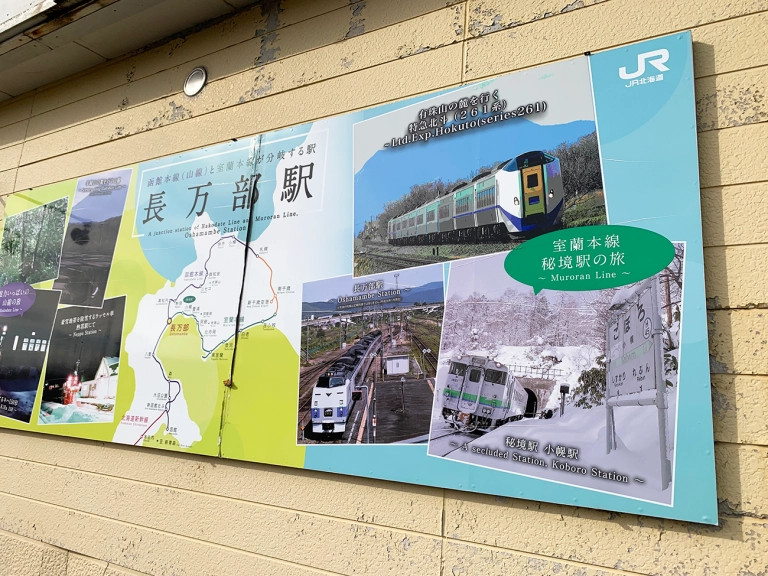
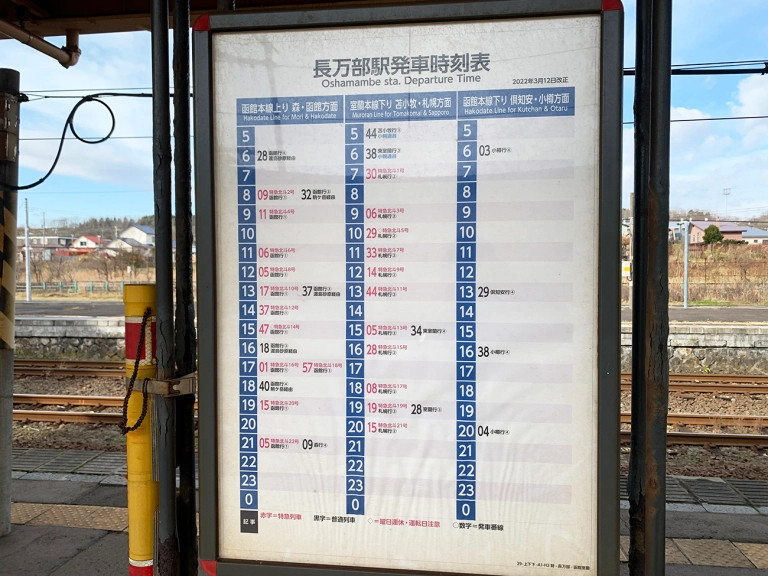
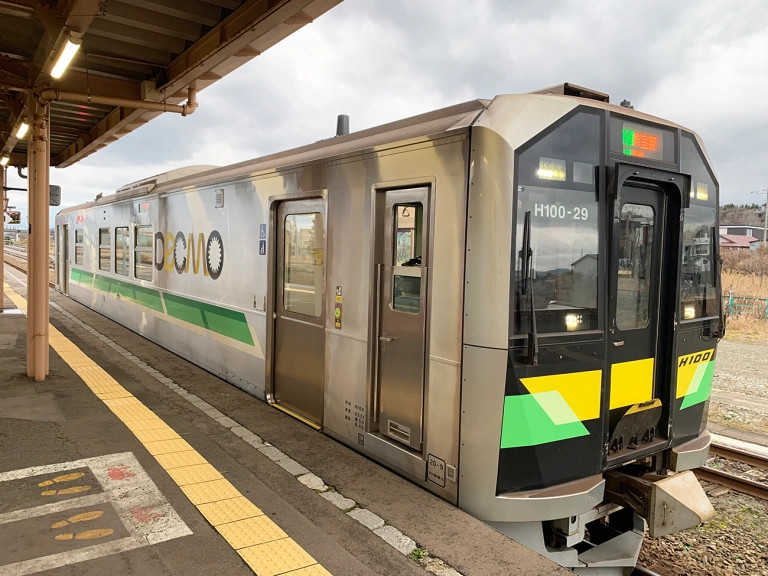
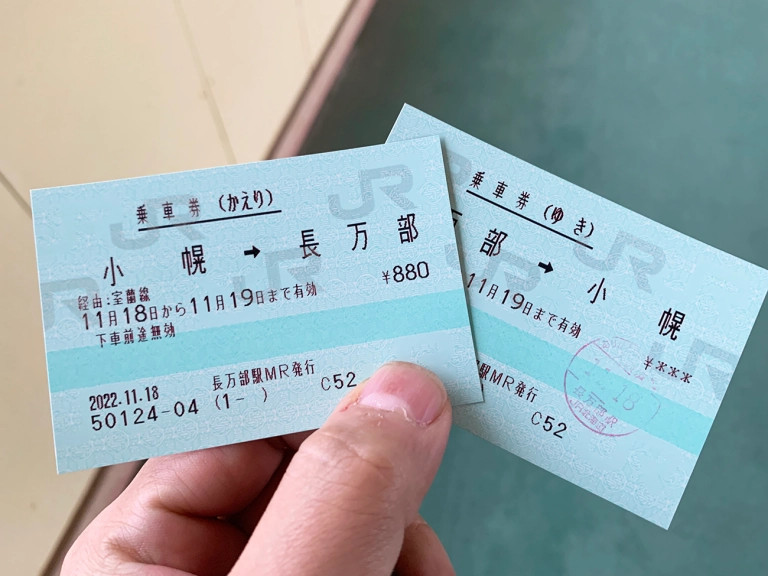
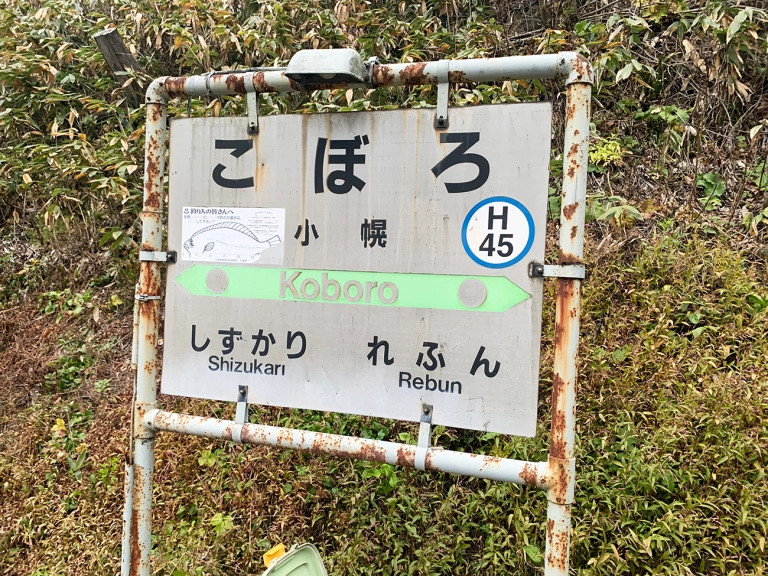
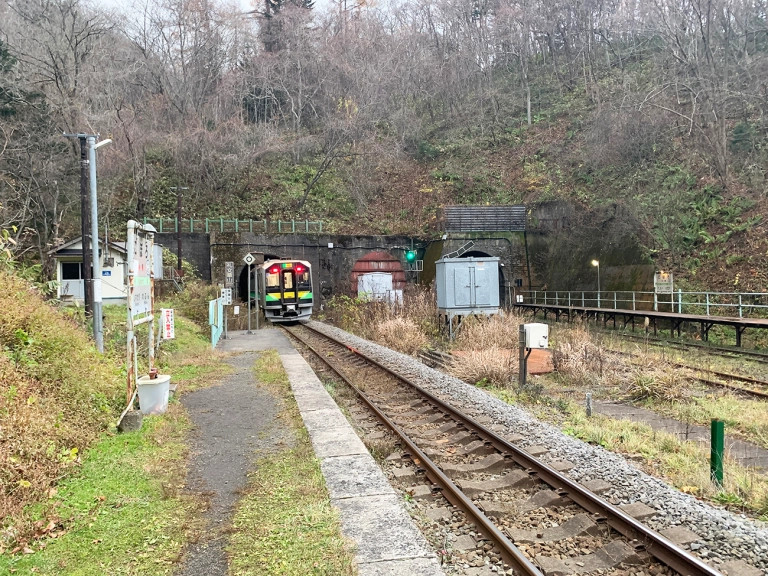
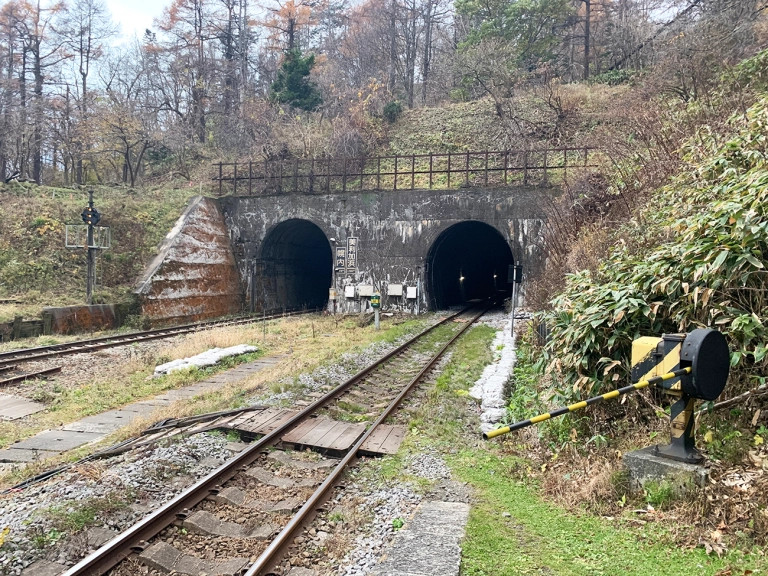
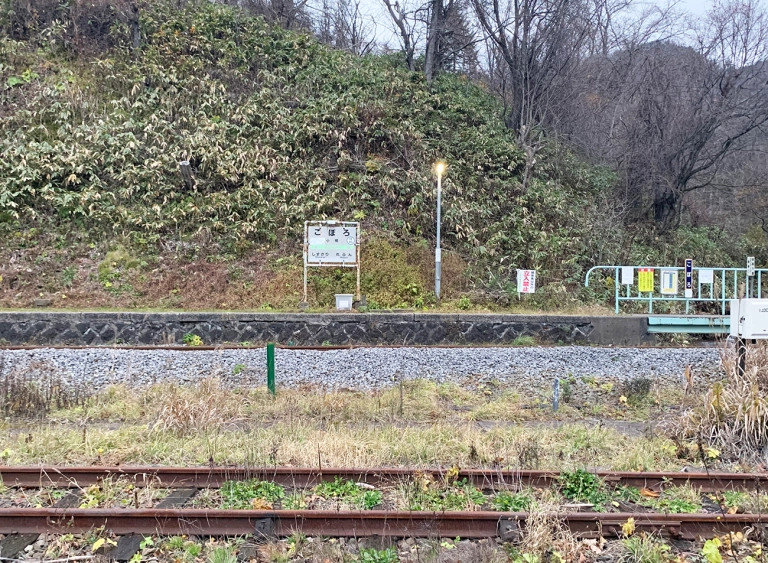
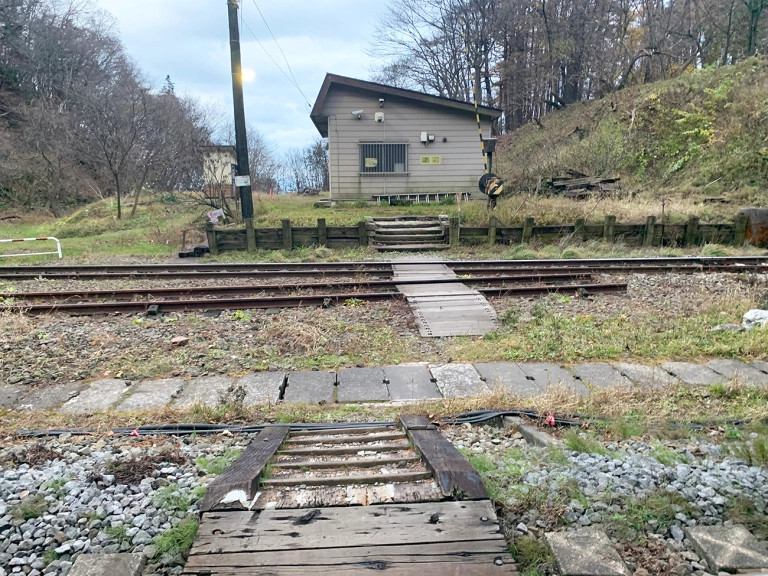
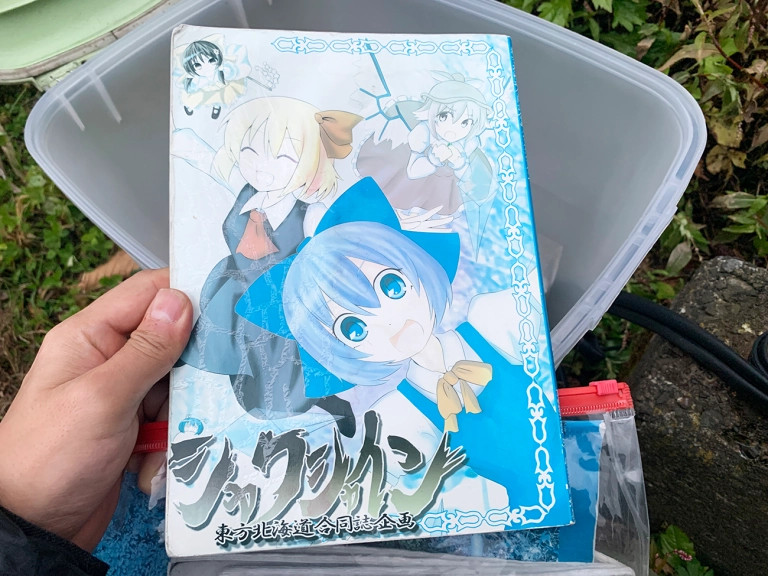
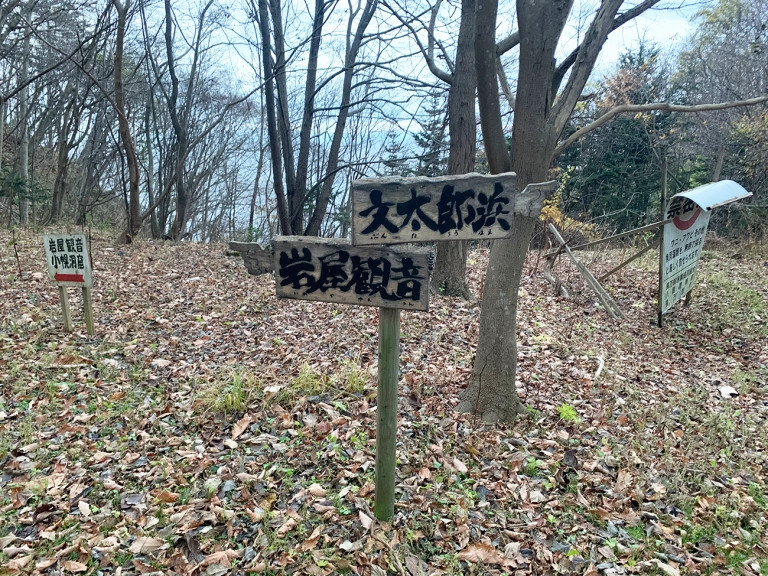
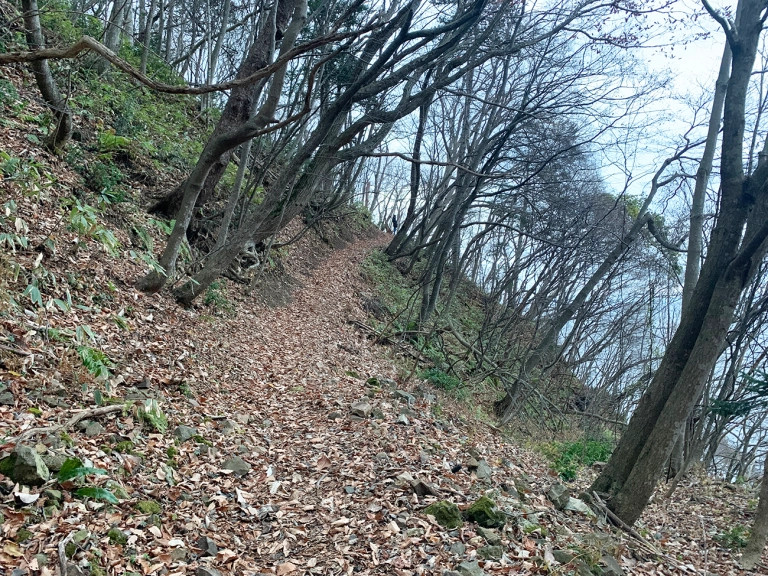
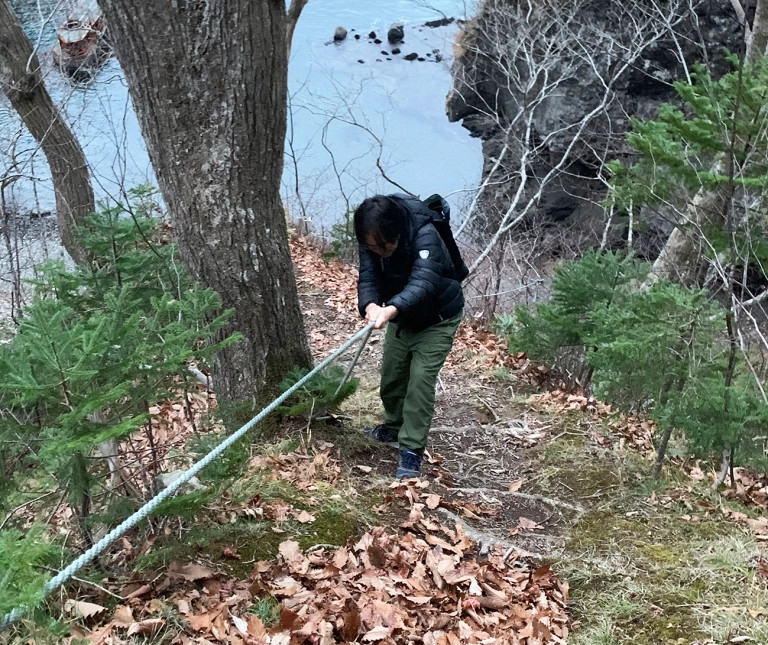
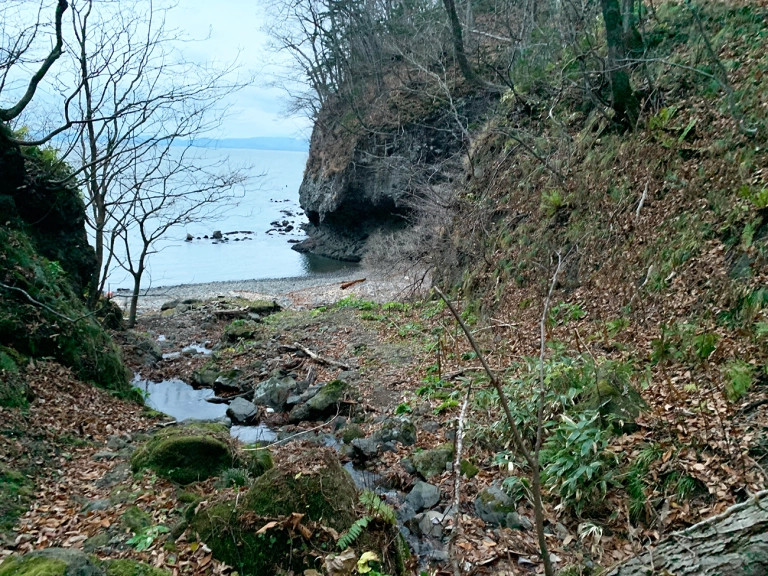
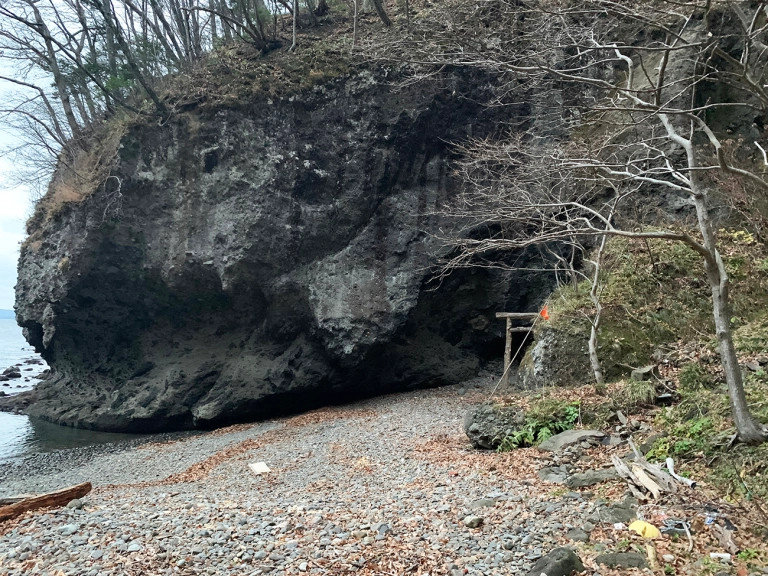
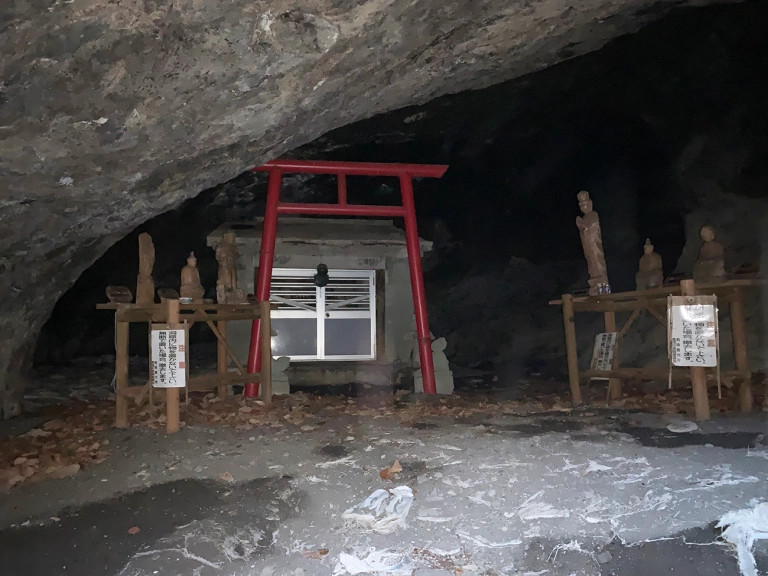
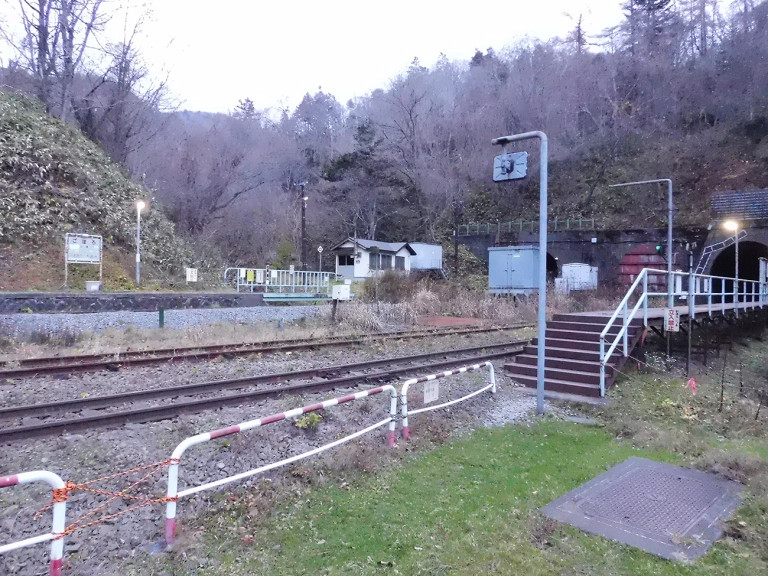
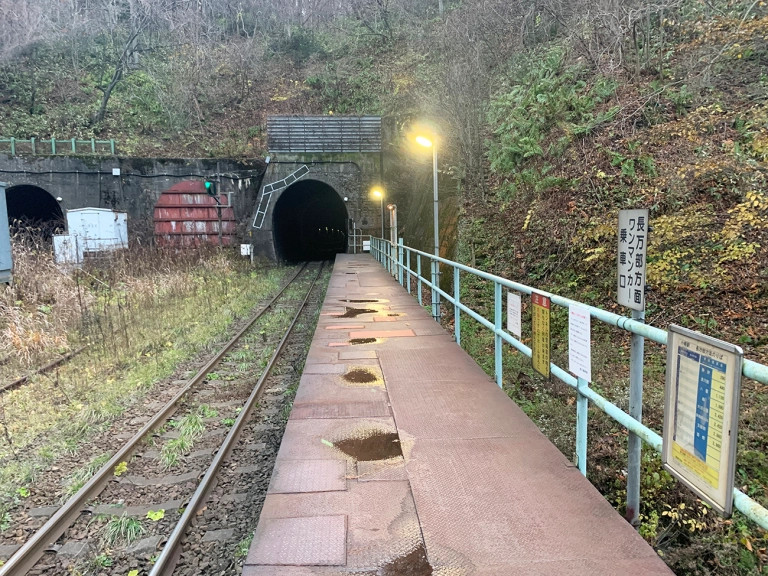
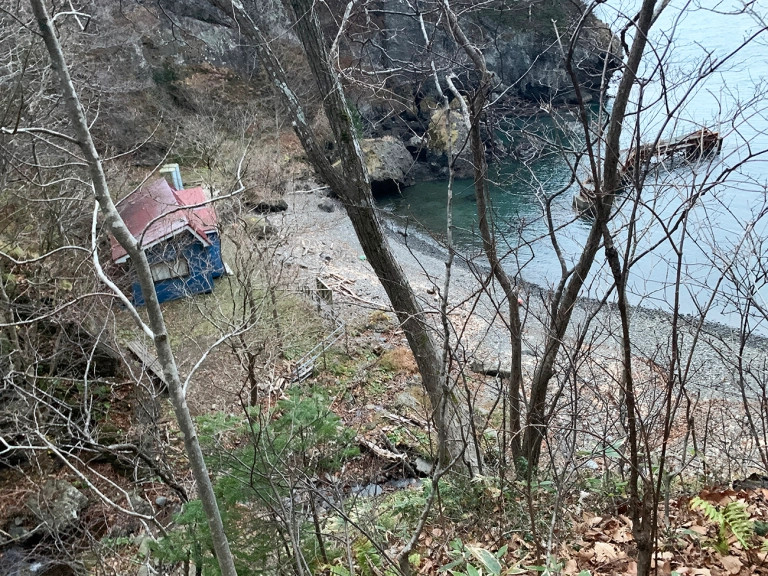
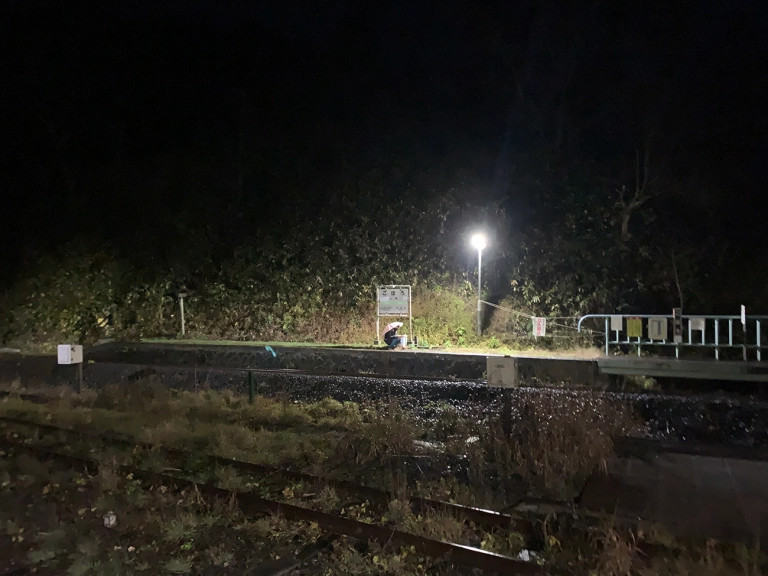
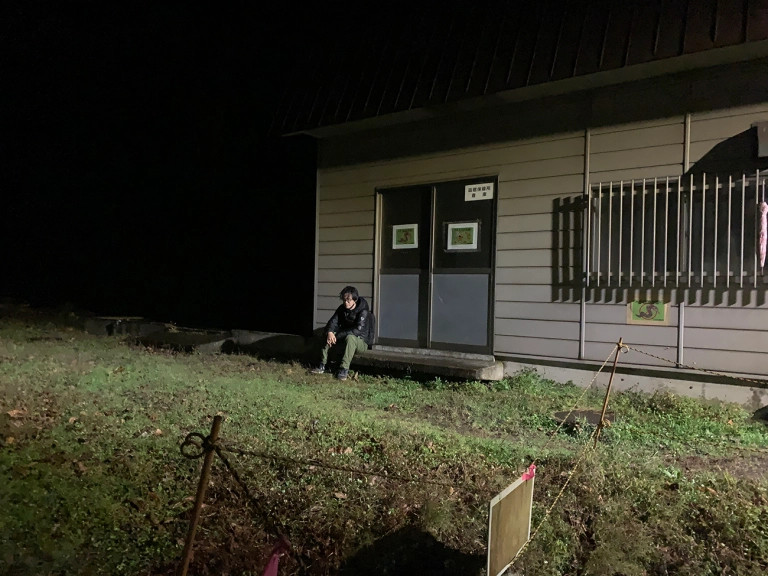
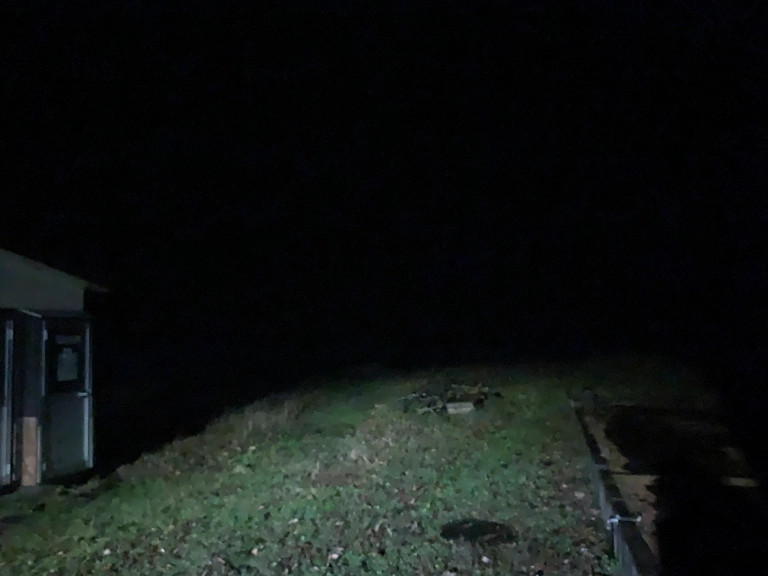
 Saga Prefecture’s hidden gem of a soba restaurant offers scrumptious, full course soba meals
Saga Prefecture’s hidden gem of a soba restaurant offers scrumptious, full course soba meals Noodle joint in Harajuku becomes a hot topic with foreigners on Reddit, but is it any good?
Noodle joint in Harajuku becomes a hot topic with foreigners on Reddit, but is it any good? “Hey, Japanese taxi driver, take us to the best seafood joint in Otaru!”
“Hey, Japanese taxi driver, take us to the best seafood joint in Otaru!” Crazy-huge triple-decker wagyu hamburger steak will draw you to Akihabara even if you hate anime
Crazy-huge triple-decker wagyu hamburger steak will draw you to Akihabara even if you hate anime This is the one and only kakuni pork bowl restaurant in Tokyo, and it’s amazing
This is the one and only kakuni pork bowl restaurant in Tokyo, and it’s amazing Japanese ramen restaurants under pressure from new yen banknotes
Japanese ramen restaurants under pressure from new yen banknotes New private rooms on Tokaido Shinkansen change the way we travel from Tokyo to Kyoto
New private rooms on Tokaido Shinkansen change the way we travel from Tokyo to Kyoto McDonald’s new Happy Meals offer up cute and practical Sanrio lifestyle goods
McDonald’s new Happy Meals offer up cute and practical Sanrio lifestyle goods We tried Korea’s way-too-big King Tonkatsu Burger at Lotteria 【Taste Test】
We tried Korea’s way-too-big King Tonkatsu Burger at Lotteria 【Taste Test】 French Fries Bread in Tokyo’s Shibuya becomes a hit on social media
French Fries Bread in Tokyo’s Shibuya becomes a hit on social media Sakura tree falls on man at Sannenzaka near Kiyomizu temple in Kyoto 【Breaking News】
Sakura tree falls on man at Sannenzaka near Kiyomizu temple in Kyoto 【Breaking News】 Mt. Koya planning to instate visitor’s tax to cope with huge tourist numbers
Mt. Koya planning to instate visitor’s tax to cope with huge tourist numbers Studio Ghibli releases new action figures featuring Nausicaä of the Valley of the Wind characters
Studio Ghibli releases new action figures featuring Nausicaä of the Valley of the Wind characters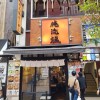 Non-ramen Ramen Restaurant Stars: The quest begins at Tokyo’s Oreryu Shio
Non-ramen Ramen Restaurant Stars: The quest begins at Tokyo’s Oreryu Shio We try out “Chan Ramen”, an underground type of ramen popular in the ramen community
We try out “Chan Ramen”, an underground type of ramen popular in the ramen community All-you-can-drink Starbucks and amazing views part of Tokyo’s new 170 meter-high sky lounge
All-you-can-drink Starbucks and amazing views part of Tokyo’s new 170 meter-high sky lounge More foreign tourists than ever before in history visited Japan last month
More foreign tourists than ever before in history visited Japan last month Starbucks reopens at Shibuya Scramble Crossing with new look and design concept
Starbucks reopens at Shibuya Scramble Crossing with new look and design concept Studio Ghibli glasses cases let anime characters keep an eye on your spectacles
Studio Ghibli glasses cases let anime characters keep an eye on your spectacles Is the new Shinkansen Train Desk ticket worth it?
Is the new Shinkansen Train Desk ticket worth it? Beautiful Ghibli sealing wax kits let you create accessories and elegant letter decorations【Pics】
Beautiful Ghibli sealing wax kits let you create accessories and elegant letter decorations【Pics】 Studio Ghibli releases Kiki’s Delivery Service chocolate cake pouches in Japan
Studio Ghibli releases Kiki’s Delivery Service chocolate cake pouches in Japan New definition of “Japanese whiskey” goes into effect to prevent fakes from fooling overseas buyers
New definition of “Japanese whiskey” goes into effect to prevent fakes from fooling overseas buyers Our Japanese reporter visits Costco in the U.S., finds super American and very Japanese things
Our Japanese reporter visits Costco in the U.S., finds super American and very Japanese things Studio Ghibli unveils Mother’s Day gift set that captures the love in My Neighbour Totoro
Studio Ghibli unveils Mother’s Day gift set that captures the love in My Neighbour Totoro Domino’s Japan now sells…pizza ears?
Domino’s Japan now sells…pizza ears? New Japanese KitKat flavour stars Sanrio characters, including Hello Kitty
New Japanese KitKat flavour stars Sanrio characters, including Hello Kitty New Pokémon cakes let you eat your way through Pikachu and all the Eevee evolutions
New Pokémon cakes let you eat your way through Pikachu and all the Eevee evolutions Sales of Japan’s most convenient train ticket/shopping payment cards suspended indefinitely
Sales of Japan’s most convenient train ticket/shopping payment cards suspended indefinitely Sold-out Studio Ghibli desktop humidifiers are back so Totoro can help you through the dry season
Sold-out Studio Ghibli desktop humidifiers are back so Totoro can help you through the dry season Japanese government to make first change to romanization spelling rules since the 1950s
Japanese government to make first change to romanization spelling rules since the 1950s Ghibli founders Toshio Suzuki and Hayao Miyazaki contribute to Japanese whisky Totoro label design
Ghibli founders Toshio Suzuki and Hayao Miyazaki contribute to Japanese whisky Totoro label design Doraemon found buried at sea as scene from 1993 anime becomes real life【Photos】
Doraemon found buried at sea as scene from 1993 anime becomes real life【Photos】 Tokyo’s most famous Starbucks is closed
Tokyo’s most famous Starbucks is closed One Piece characters’ nationalities revealed, but fans have mixed opinions
One Piece characters’ nationalities revealed, but fans have mixed opinions We asked a Uniqlo employee what four things we should buy and their suggestions didn’t disappoint
We asked a Uniqlo employee what four things we should buy and their suggestions didn’t disappoint Princesses, fruits, and blacksmiths: Study reveals the 30 most unusual family names in Japan
Princesses, fruits, and blacksmiths: Study reveals the 30 most unusual family names in Japan Does Tokyo’s King of Tonkatsu live up to its name? We find out 【Taste Test】
Does Tokyo’s King of Tonkatsu live up to its name? We find out 【Taste Test】 Harvester Yakumo: A restaurant inspired by the Colonel from KFC
Harvester Yakumo: A restaurant inspired by the Colonel from KFC The best soba restaurant on Yakushima island, according to locals
The best soba restaurant on Yakushima island, according to locals What happens when a guy throws on a wig and a dress and goes to Japan’s #1 pick-up spot?
What happens when a guy throws on a wig and a dress and goes to Japan’s #1 pick-up spot? Japanese restaurant chain causes a stir with foreigners online, but is it any good?
Japanese restaurant chain causes a stir with foreigners online, but is it any good? These Pakistani students in Tokyo had never been to the beach, and that’s something we had to fix
These Pakistani students in Tokyo had never been to the beach, and that’s something we had to fix This London ramen restaurant’s super-strange ramen shocks our Japanese taste-tester
This London ramen restaurant’s super-strange ramen shocks our Japanese taste-tester Amazon Japan are selling Uber Eats backpacks and they’re surprisingly useful
Amazon Japan are selling Uber Eats backpacks and they’re surprisingly useful English-language Reddit falls in love with curry restaurant– Can it win our taste tester’s heart?
English-language Reddit falls in love with curry restaurant– Can it win our taste tester’s heart? A Gintama fan’s emotional 19-year journey to buy a proper Lake Toya bokuto wooden katana【Pics】
A Gintama fan’s emotional 19-year journey to buy a proper Lake Toya bokuto wooden katana【Pics】 What’s it like to attend an idol concert where they’re singing lyrics that you wrote? Complicated
What’s it like to attend an idol concert where they’re singing lyrics that you wrote? Complicated Hokkaido has an otherworldly giant hot spring that’s easy to miss if you don’t know where it is
Hokkaido has an otherworldly giant hot spring that’s easy to miss if you don’t know where it is Is Burger King’s Big Mouth Burger really as overwhelmingly meaty as promised? 【Taste test】
Is Burger King’s Big Mouth Burger really as overwhelmingly meaty as promised? 【Taste test】 What does a family restaurant in the middle of nowhere, Hokkaido, serve? We find out
What does a family restaurant in the middle of nowhere, Hokkaido, serve? We find out How do you beat Bic Camera’s Lucky Box lines, and what’s inside their Sim-Free Phone box?
How do you beat Bic Camera’s Lucky Box lines, and what’s inside their Sim-Free Phone box?
Leave a Reply